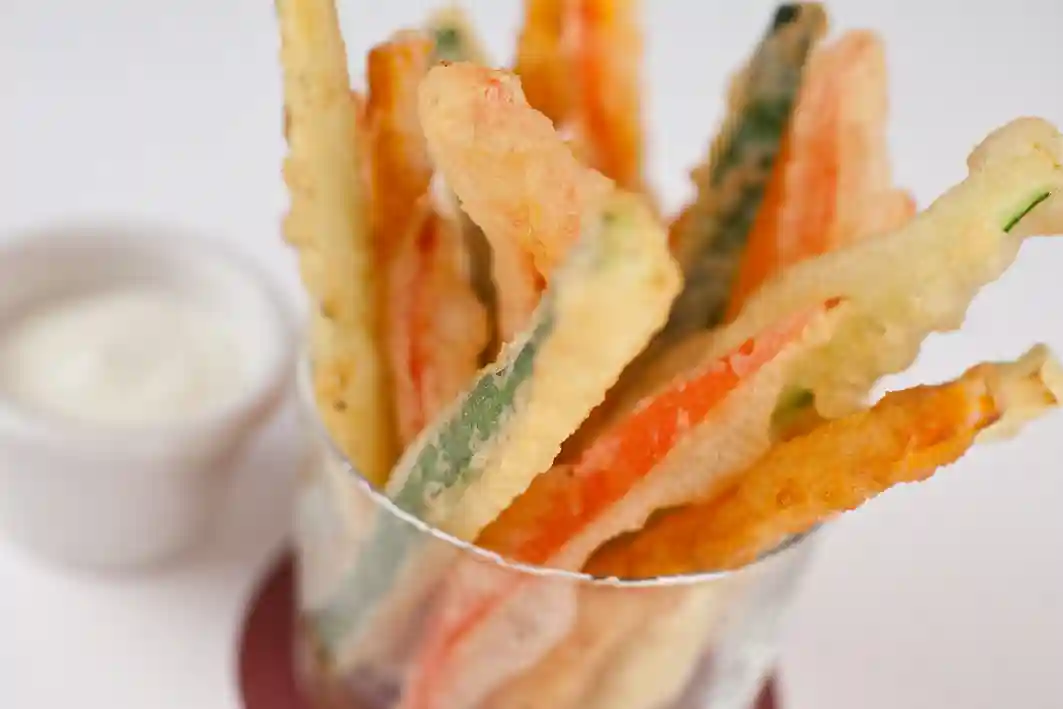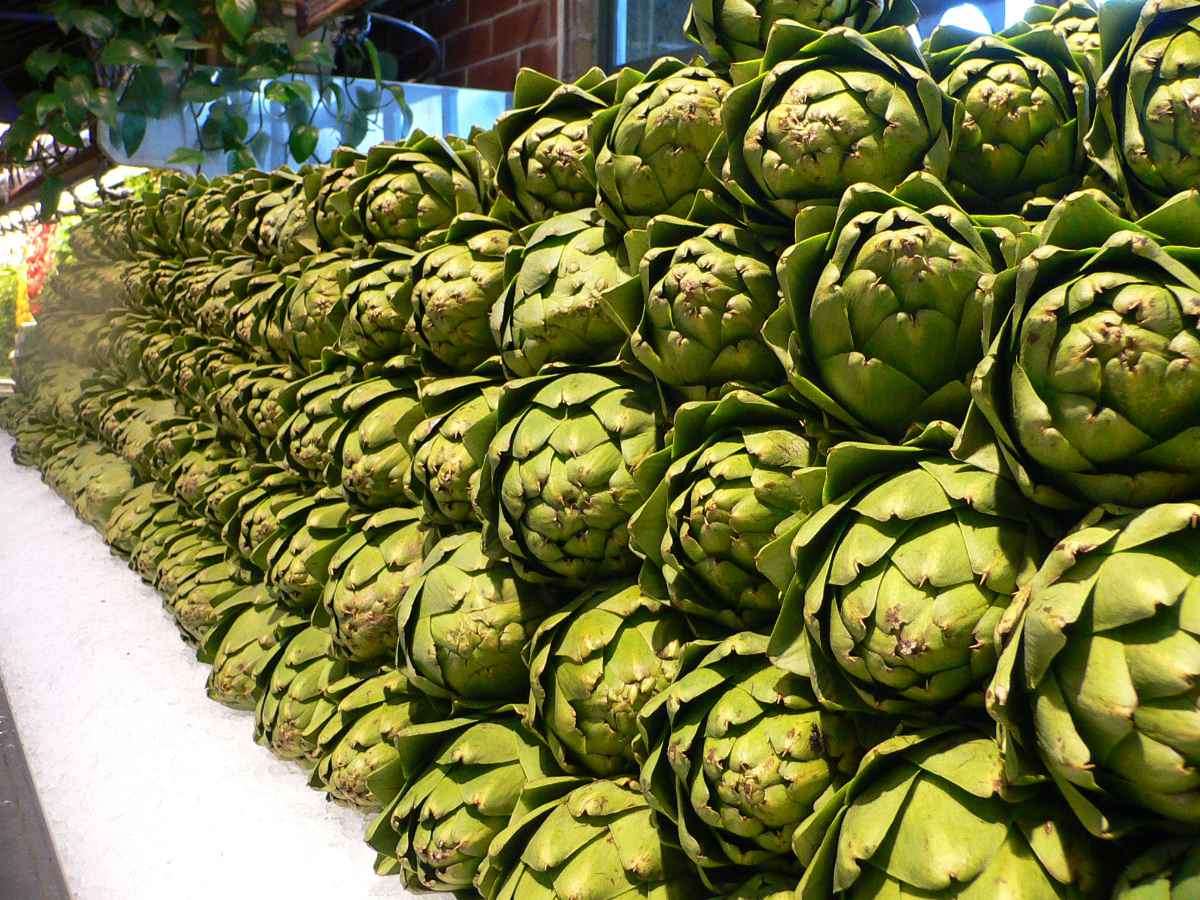Celiac.com 08/27/2024 – Tempura is a popular Japanese dish known for its light and crispy texture. It typically consists of seafood or vegetables coated in a batter and deep-fried until golden brown. While tempura may seem straightforward, the ingredients used in the batter can raise concerns for those who need to avoid gluten. Traditionally, tempura batter is made from wheat flour, which contains gluten, making the dish unsafe for individuals with celiac disease or gluten sensitivity. Understanding the components of tempura and how it is prepared is crucial for anyone following a gluten-free diet.
Gluten in Traditional Tempura
The primary ingredient in traditional tempura batter is wheat flour, which is mixed with cold water and sometimes an egg to create a smooth coating. Wheat flour is a significant source of gluten, a protein that provides elasticity and structure to baked goods. In tempura, gluten contributes to the batter’s ability to adhere to the food and maintain a crispy texture after frying. However, for those with celiac disease, consuming even small amounts of gluten can lead to serious health issues, making traditional tempura off-limits.
Additionally, cross-contamination is a risk when preparing tempura in shared kitchens or restaurants that also handle gluten-containing foods. Even if a gluten-free batter is used, the oil or frying equipment could be contaminated with gluten, posing a hidden danger to those with strict dietary restrictions.
Gluten-Free Tempura Alternatives
For individuals who love tempura but must avoid gluten, there are alternatives available. Several gluten-free flours can be used to make a similar batter, such as rice flour, corn flour, or a gluten-free all-purpose flour blend. These substitutes can mimic the texture and lightness of traditional tempura without the gluten. However, it’s important to ensure that these flours are certified gluten-free, as cross-contamination during processing is a common issue.
Some restaurants and home cooks have embraced gluten-free tempura recipes, offering options that cater to those with gluten sensitivities. When dining out, it is essential to ask about the preparation methods and whether gluten-free ingredients and practices are used. Additionally, there are pre-made gluten-free tempura batters available in stores, which can be a convenient option for those wanting to recreate this dish at home.
Why This Matters for Those with Celiac Disease
For individuals with celiac disease, avoiding gluten is not just a dietary choice but a medical necessity. Even trace amounts of gluten can trigger an immune response that damages the small intestine, leading to various health problems. The prevalence of gluten in traditional tempura means that those with celiac disease must be vigilant when ordering this dish at restaurants or preparing it at home.
The availability of gluten-free alternatives provides an opportunity for people with celiac disease to enjoy foods like tempura without compromising their health. By being informed about ingredients and preparation methods, those on a gluten-free diet can safely indulge in their favorite dishes.
Conclusion: Making Safe Choices
The question of whether tempura is gluten-free depends largely on how it is prepared. Traditional tempura batter contains wheat flour, making it unsuitable for those with celiac disease or gluten sensitivity. However, with the right ingredients and precautions, it is possible to enjoy a gluten-free version of this popular dish. The key is to use certified gluten-free flours and to be aware of potential cross-contamination risks, especially when dining out. For those with celiac disease, the ability to identify and choose safe, gluten-free options is essential for maintaining their health and quality of life.
Here’s a simple and delicious gluten-free tempura recipe that you can make at home:
Gluten-Free Tempura Recipe
Ingredients:
½ cup gluten-free rice flour
½ cup gluten-free cornstarch
¼ cup gluten-free potato starch
1 tsp baking powder (ensure it’s gluten-free)
¼ tsp salt
1 cup ice-cold sparkling water (or club soda)
Vegetable oil (for frying)
Assorted vegetables or seafood (e.g., shrimp, zucchini, sweet potatoes, mushrooms, broccoli)
Instructions:
Prepare the Ingredients:
Wash and cut your vegetables into bite-sized pieces. If using seafood like shrimp, clean and devein them, leaving the tail on if desired.
Pat the vegetables and seafood dry with paper towels to ensure the batter sticks well.
Heat the Oil:
Pour vegetable oil into a deep pan or pot, filling it to a depth of about 2-3 inches. Heat the oil to 350°F (175°C). Use a thermometer to maintain the right temperature throughout frying.
Make the Batter:
In a mixing bowl, combine the gluten-free rice flour, cornstarch, potato starch, baking powder, and salt. Stir until well mixed.
Gradually add the ice-cold sparkling water, gently stirring with chopsticks or a fork. Be careful not to overmix; the batter should be lumpy and light.
Fry the Tempura:
Dip the prepared vegetables or seafood into the batter, allowing any excess to drip off.
Carefully place the battered items into the hot oil, frying a few pieces at a time. Do not overcrowd the pan.
Fry each piece until golden and crispy, about 2-3 minutes. Remove with a slotted spoon and drain on paper towels.
Serve:
Serve the gluten-free tempura hot with a dipping sauce like gluten-free soy sauce or a simple tempura sauce (mix soy sauce, mirin, and dashi).
Enjoy your crispy, gluten-free tempura with a side of rice or salad.
Tips:
Keep it cold: The key to crispy tempura is using cold sparkling water and keeping the batter cold. If needed, place the mixing bowl in a larger bowl filled with ice to maintain the temperature.
Batter consistency: The batter should be thin and light, so avoid overmixing, which can make it heavy.
This gluten-free tempura recipe allows you to enjoy the classic Japanese dish without worrying about gluten, making it safe and delicious for those with celiac disease or gluten sensitivity.
Source link



